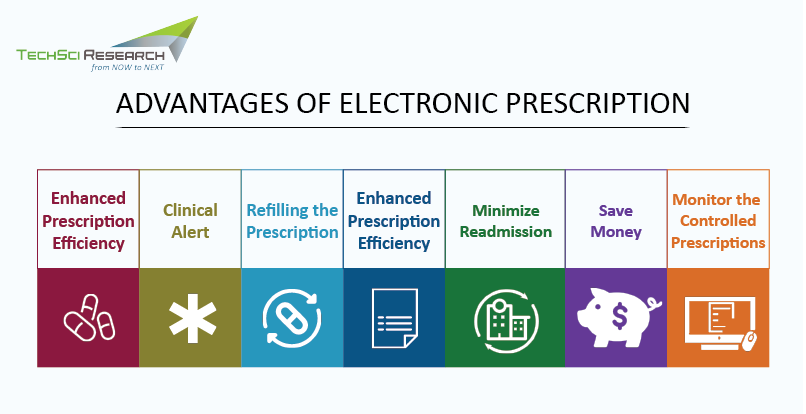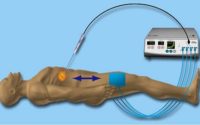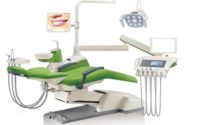e-Prescription Market Overview
Healthcare industry has lagged in embracing innovations in Information Technology, but the sector is on its way to adapt new developments to move forward and provide the most effective processes for both patients and providers. According to the World Health Organization statistics, medication errors cause at least one death every day and cause serious injuries to nearly 1.3 million people. Besides, the costs related to medication errors cost around USD42 billion, which accounts 1% of the net global health expenditure. Rising medication errors and overdoses can be attributed mainly to the health worker fatigue, overcrowding, staff shortages and wrong information provided to the patients while prescribing the medications. All these medication errors are potentially avoidable if the patient receives right medication at the right dose via the right route at the right time. Hence, electronic prescription, also known as e-prescription is emerging as an effective tool to overcome most of the risks associated with the improper use of medications. Many organizations are relying on health IT systems designed to improve the prescription ordering and medication administration. E-prescription not only improve the safety and quality of the prescribing process and relieve the regulatory burden.
Rising Trend of Connected & Automated Health System to Boost Market Growth
Digital transformation driven by federal efforts to eliminate paper-based clinical practices and support innovations in care and delivery and payment reform. The adoption of EHR rates have increased significantly to improve patient engagement, accessibility, regulation, and standardization. Allowing healthcare providers to access patient history, diagnoses, and medical information, e-prescription help improve patient care. Increase in telemedicine and telehealth solutions for delivering care to patients and rising focus of authorities on reducing the usage of controlled substance are also contributing to the adoption of electronic prescription (e-prescription). In United States, 84% of all prescriptions were electronic, equivalent to 1.91 billion e-prescriptions in 2021. E-prescriptions improve workflow and reduce paperwork for pharmacies, thus improving efficiency of pharmacy operations.

Growing Illicit Drug Use to Fuel Demand for e-Prescription
Prescription drugs are rapidly becoming the next most popular form of recreational drug. In recent years, prescription drug abuse is the fastest growing drug problem in the United States. In 2020, 5.8% of people aged 12 or older (around 16.1 million people) reported misusing prescription drugs in United States. Approx. 16,416 people died from illicit use of prescription opioids while 5,567 people died from overdose from antidepressants in 2020. e-prescribing can help enhance the safety and quality of prescribing process, preventing falsifications or alterations. Leveraging e-prescriptions, prescribers can track the number of controlled substance prescriptions that a patient has received within a specific period, which could reduce the probability of over-prescribing. E-prescriptions can help the state to track and collect data from multiple pharmacies to check the substances dispensed in the state. Many states in the United States run prescription drug monitoring programs (PDMPs) to improve the drug prescribing and prevent illicit substance abuse. Increased initiatives by the government to control the drug-induced deaths in the country is expected to contribute to the increased adoption of e-prescription tools and contribute to their market growth.
Growing Initiatives by Government Initiatives
The number of deaths caused by prescription-related errors contribute to unwanted administrative and regulatory burdens on health care providers. The medication errors caused with the misuse of medications can cost roughly USD21 billion, which represents a substantial source of healthcare expenditure. Hence, the government across the world are taking initiatives to implement strategies for reducing administrative and regulatory burden on healthcare providers. The European Union government has taken initiatives to allow electronic transfer of their prescription from his/her country of residence to the country of travel. Moreover, data security measures are being adopted by various regulatory authorities to prevent the incidences of data theft, which is expected to further push the growth of the global e-prescription market.
Moreover, increasing number of software emerging for e-prescription by the market players and technological advancements in healthcare are anticipated to propel the market growth in the coming years. According to the TechSci Research report on “E-Prescription Market – Global Industry Size, Share, Trends, Opportunity and Forecast, 2016-2026 Segmented By Component (Solutions {Standalone Solutions & Integrated Solutions} & Services), By Mode Of Delivery (On-Premises Solutions & Web/Cloud-based Solutions), By End-User Segment Analysis (Hospitals, Pharmacies & Clinics), By Region”, the global e-prescription market is expected to register growth at a formidable rate. The market growth can be attributed to the rising demand for errorless medical prescription and growing need for connectivity in the healthcare industry.
Contact
Mr. Ken Mathews
708 Third Avenue,
Manhattan, NY,
New York – 10017
Tel: +1-646-360-1656
Email: sales@techsciresearch.com
Website: https://www.techsciresearch.com



